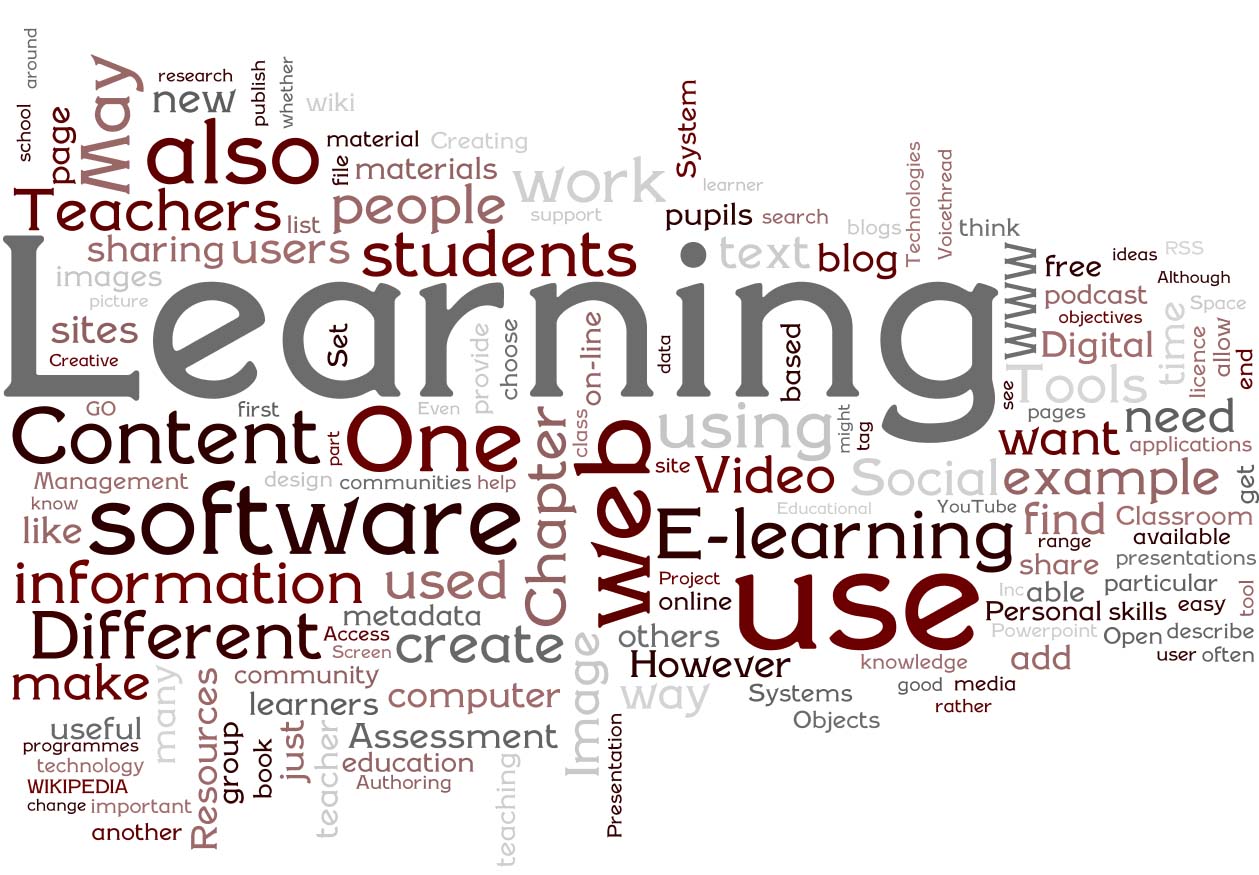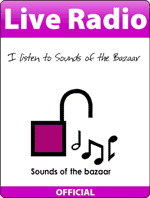eLearning 2.0 w firmie i masa krytyczna
Wiecie juz na pewno, ze chcemy na Paradygmacie 2.0 eksperymentowac z roznymi formami blogowania. Nasz pierwszy wpis mial forme rozmowy, dyskusji na temat poczatkow i podstaw PLE. Dzisiaj dla odmiany wywiad. Czym rozniy sie od rozmowy? Wlasciwie najbardziej tym, ze zadajacy pytania nie duzo o sobie informuje. Kilka dni temu rozmawialam na Skypie z Piotrem Peszko, autorem bloga eLearning 2.0 i moderatorem forum elearningu na goldenline.pl, o tym, jak wyglada elearning w firmach, tzn. czy stosuje sie rozwiazania 1.0 czy 2.0, w jaki sposob wprowadza sie siec spoleczna, jakie czynniki wplywaja na to, czy uda sie wprowadzic wiki, blogi, twittera itd itp. … Oto pierwsza czesc zapisu naszej rozmowy.
Ilona: Ok, zacznijmy od ogolow – czym sie zajmujesz?
Piotr: Aktualnie projektuję rozwiązania e-learningowe dla produktu o nazwie GetThere. Właśnie uruchomiłem II edycję projektu dla osób 45 +, w którym jest dużo elearningu, a także zajmuję się wdrożeniem rozwiązania do zarządzania dokumentacją w modelu single-sourcing i połączeniu go z elearningiem.
Ilona: Co to jest single-sourcing model?
Piotr: Model zarządzania treścią – kontentem w różnej formie – online, offline itd. Jest oparty na xml-u i pozwala na wielokrotne wykorzystywanie treści i jej konfigurowanie.
Ilona: Masz przyklad?
Piotr: Załóżmy, że masz bloga, piszesz różne treści, tagujesz … i nagle chcesz zrobić z niego książkę. Lipa – nie da się szybko i sprawnie. Single sourcing to podejście, które pozwala na edytowanie treści w jednym miejscu i eksportowanie jej do różnych – zdefiniowanych uprzednio formatów, np. elearningu, wiki, html-a, htmla dla urządzeń mobilnych, pdf, doc itd. itp. i wykorzystania tagów oraz tzw. conditionals zależnych od formatu wyjściowego
Ilona: Aha, ciekawe, a masz moze linka do jakiejs aplikacji opartej na tym modelu?
Piotr: Polecam DocBook na początek. To już trzeci taki project. Każdy inny, ale założenia podobne – po co pisać internal/external reference tutorial + online help + elearning, jeśli każdy z nich korzysta z tej samej treści. Trzeba zdefiniować źródło, procesy i ogień – niech się samo robi 🙂
Ilona: Dzieki, to ciekawe. A co Ty robisz na AGH?
Piotr: Na AGH juz nie wiele, ponieważ od marca pracuję w Sabre Holdings Polska, pożegnałem się z uczelnią 🙂
Ilona: To ciekawe, a to co firmy robia w Polsce to bardziej elearning 1.0 czy 2.0?
Piotr: Korporacje po prostu przenoszą swoje wypróbowane rozwiązania na nowy grunt. Posiadają LMS-y wielkie bazy szkoleń, dostęp do niemal wszystkich książek online, wiki, sociale itd. E-learning 1.0 istnieje jako pewna warstwa materialów odniesienia, a profile funkcjonują w wewnętrznych systemach społecznościowych. Także elearning 1.0, elearning 2.0 i workplace learning to chleb powszedni.
Ilona: A jak laczycie elearning 1.0 i 2.0? Na przyklad, w jaki sposob wprowadzacie i stosujecie wiki, blogi? Slyszala, ze wie niektorych korporacjach wprowadza sie wiki w taki sposowb, ze kazdy pracownik musi napisac iles tam stron i iles tam stron skomentowac I to wszystko w scisle okreslonym czasie.
Piotr: Hmm… no nie wiem czy przymus to najlepsze rozwiązanie. Wdrażałem kiedyć taki social w korporacji i wymuszanie okazało się fiaskiem, dopiero danie czegoś w zamian, np. szybki dostęp do informacji poprzez wewnętrzny twitter, okazało się skuteczne. Problem jest taki, że ta firma jest bardzo nie-polska, a bardzo amerykańska, dlatego pewne rozwiązania są i funkcjonują globalnie.
Ilona: Czyli co w tym przypadku wplywa na udane wprowadzanie sieci spolecznych w firmach?
Piotr: Z mojego doświadczenia wynika, że musi zostać przekroczona pewna masa krytyczna, która pozwala społeczności uczącej się funkcjonować. Równiez pewien stopień anonimowości. On jest ważny w socialach. Zawsze są opory przed odsłonięciem swojej niewiedzy. To tak jak z tłumem zadającym pytania, albo dyskutującym. W grupie raźniej, stadne z nas zwierzę i lepiej się czujemy jeśli możemy zadać pytanie albo zasięgnać rady anonimowo nie narażając się na jakieś uwagi, czy docinki. Social network nie wypali w grupie 20 osob, ale np. w polskim klonie twittera – blipie bardzo często pojawiają się pytania kierowane “w eter” z tagiem #drogiblipie.
Ilona: No to opowiedz, jak to bylo z tym twitterem w twojej firmie? Byla masa krytyczna? Odpowiedni stopien anonimowosci? Wszystko poszlo gladko?
Piotr: To było jakieś 2-3 lata temu – facebook raczkował. Pracowników było około 200, twitter był, blip był, ale raczej jako eksperymenty. Okazało się jednak, że za wcześnie…
Ilona: Dlaczego za wczesnie?
Piotr: Bo nikt nie znał tych narzędzi i nie wiedział po co one są, jak z nich korzystać i co to daje. Dopiero jak okazało się, że ktoś to robi i to daje efekty zaczęto się tym interesować. To takie troszkę małpowanie. Z mojej perspektywy to mało one mają wspólnego z uczeniem się, raczej zabawa i zabijanie czasu – pracy 🙂 Tak to niestety wygląda. Społeczności takie jak linkedin czy goldenline to głównie źródło potencjalnych pracowników / zleceniodawców + wymiana informacji ekspertów.
Ilona: Czy w firmach w Polsce mozna ogolnie uzywac twittera? W Niemczech jest coraz wiecej firm, ktore to ograniczaja, wlasnie z tego powodu, ze nie sa uzywane do pracy, tylko do “zabawy”.
Piotr: W wielu firmach nie ma przeszkód. To zależy od modelu pracy, ja na przykład nie wyobrażam sobie pracy bez 1) Google, 2) last.fm i kilku innych
Ilona: Czyli nie ma zadnych problemow z eLearningiem 2.0?
Piotr: cóż… z elearningiem 2.0 jest problem, bo nawet “specjaliści” dużo mówią na jego temat, a sami nie sa w stanie stworzyć we własnym miejscu pracy takiego środowiska, które byłoby chociażby namiastką 2.0. Moim zdaniem tez i w w firmach elearning 2.0 potrzebuje pewnej masy krytycznej zapaleńców, wtedy nie ma przeszkód i nie uczenie sie nie zależy od środków miejsca, czasu…
Ilona: A sa jakies dobre przyklady PLE w Polsce?
Piotr: Szczerze powiem, że się nie spotkałem. Może za mało szukam :), albo nic nie wystaje ponad dno.
Ilona: Nawet u Ciebie w firmie ;)?
Piotr: No to co teraz robimy to jest eLearning 2.0. Ja np. zarządzam projektem korzystając z Wiki. Wrzucam tam zasoby, uczestnicy komentują, dokładają swoje. Mam przygotowany szablon projektu, kopiuje go i zaczynamy.
Ilona: Na zasadzie samoorganizacji – kto co da, czy masz jakas strategie zarzadzania?
Piotr: Przewaznie stosuje SCRUM w standardowych, typowych projektach, a na wyższym poziomie sprawdza się PRINCE2. Bardzo dobre w Wiki jest to, że nie ma konieczności przygotowywania raportów, generowania dokumentów itd. Wszystko jest online – transparentne dla wszystkich. Wiadomo co się dzieje, kiedy i jak. No i właśnie tutaj wszyscy się uczą, bo nie ma innego wyjścia. Jesteś w projekcie = działasz na wiki.
Ilona: Ok,a wady?
Piotr: 1. Wypada zrezygnować z załączania plików; 2. Trzeba nauczyć konsekwencji stosowania Wiki; 3. muszą być jasne reguły – kto co może.
Piotr: No i hmmm… trzeba umieć korzystać z wiki. A to czasami największy problem. Chociaż, nie wyobrażam sobie projektu, w którym nie korzysta sie z jakiegoś narzędzia współpracy online.
Ilona: Jakie sa krytyczne punkty korzystania z wiki?
Piotr: Rozmiar projektu, poziom digital literacy, sposób organizacji, simplicity matters – łatwość obsługi produktu rozwiązującego istniejący problem to najlepiej sprzedawalna rzecz.
Ilona: Czyli jakie uzasadnienie biznesowe ma uzywanie sieci spolecznych w korporacjach?
Piotr: 1. Szybkość komunikacji, 2. Budowanie bazy wiedzy
Piotr: chociaż… najważniejsze moim zdaniem jest umożliwienie przekazania informacji – wiedzy – od super-specjalistów wewnątrz firmy do klientów, lub przynajmniej sprzedawców. Bo sprzedawca jest ze swoją wiedzą nt. produktu bliżej klienta
Ilona: Z tym przekazywaniem wiedzy w korporacjach to tez taki kij co ma dwa konce. jedej strony jest motywacja, zeby pokazac sie jako ekspert. Z drugiej nie moge odkryc wszystkich kart, bo ewentualnie nie bede juz ekspertem.
Piotr: To zależy od struktury organizacji i tego w jaki sposób takie aktywności są wspierane – nie wymuszane. Jesli się jest ekspertem to zawsze jest co pokazywać. Cooper dobrze o tym napisał w “Wariaci rządzą domem wariatów” – polecam,
Ilona: Dzieki. Ale czesto przeciez jest tak, ze ludzie w firmach nie zdradzaja takich informacji, ktore stanowia podsawe ich USP (unique selling proposition).
Piotr: No trochę tak, ale np. jeśli ja projektuje rozwiązania elearningowe to nie mam problemów ze zrobieniem szkolenia na temat wersjonowania i jego znaczenia. Moim zdaniem wiedza eksperta jest tak szeroka, że zawsze jest się czym dzielić
Ilona: I zdradzasz wszystkie twoje sztuczki?
Piotr: Oczywiście, że nie. Ale nie mam oporów ze zdradzaniem szczegółów warsztatu. Np. w tamtym tygodniu prowadziłem warsztaty na temat screencastów i dokładnie mówiłem jak i czym to robię.
Ilona: A gdzie byly te warsztaty? W waszej firmie?
Piotr: Nie na Uniwersytecie Pedagogicznym, dla nauczycieli 🙂
Ilona: Ho ho, i co beda stosowac?
Piotr: No nie wiem, raczej ciężko
Ilona: Dlaczego?
Piotr: Nie ma zapotrzebowania…
Ilona: No co ty?
Piotr: Wiesz to tak jak seks z filozofem: ma czym, ma gdzie, ale po co…
Ilona: (rofl)
No tak, ale to juz inny rozdzial. Druga czesc rozmowy z Piotrem Peszko na tema eLearningu 2.0 w szkolnictwie wyzszym juz w krotce 😉 Ciekawa jestem, czy Wasze doswiadczenia z eLearningiem 2.0 w firmach sa podobe. Czy wszedzie jest problem z brakiem krytycznej masy? Co myslicie na temat anonimowosci w spolecznych sieciach w firmie? Przeciez anonimowosci moze oznaczac tez problemy … Moze ktos z Was ma ochote podzielic sie swoimi doswiadczeniami z perspektywy uzytkownika eLearningu w firmie? To byloby super ciekawe. Czekam na Wasze komentarze!

